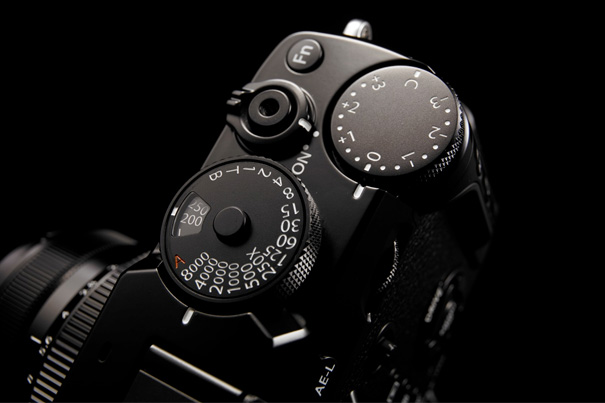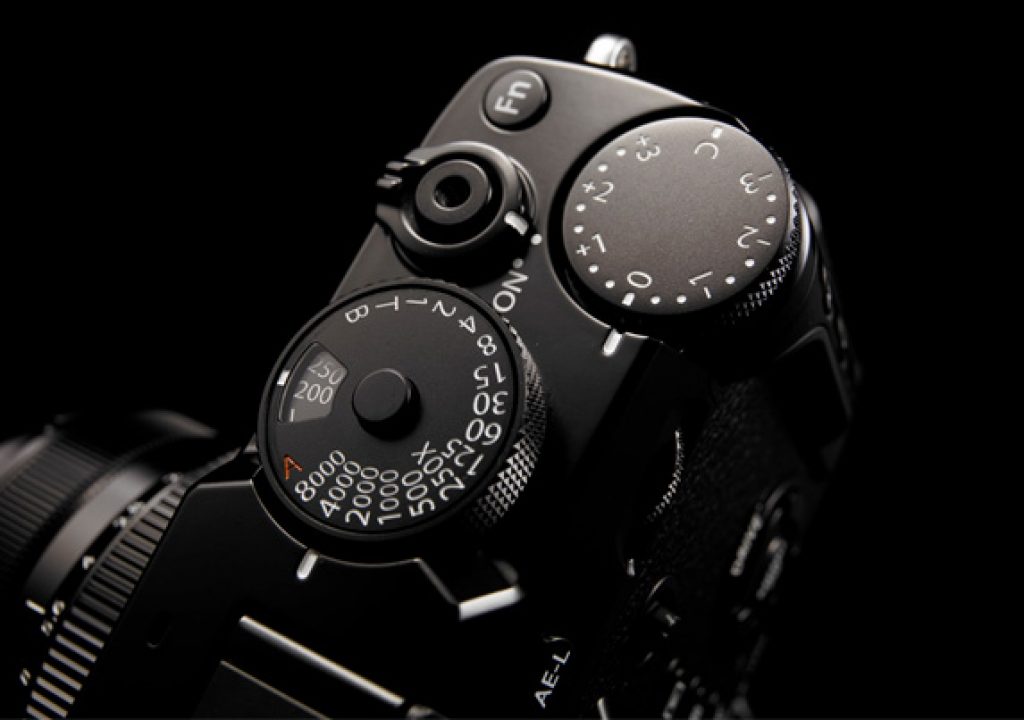
The new Fujifilm X-Pro2 mirrorless camera mixes an electronic with an optical viewfinder, introduces a newly developed 24.3MP X-Trans CMOS III sensor and comes at the same time Fujifilm shows their Fujinon XF100-400mm F4.5-5.6 R LM OIS WR. A long telephoto lens, finally!
The X-Pro2 is not the only camera announced by Fujifilm this January 2016, but it surely is one of the most sought after at the moment. The X-Pro2 is the only mirrorless camera in the world featuring a Hybrid Viewfinder system that incorporates both types of viewfinder.
The X-Pro 2, with the newest version of the Hybrid Viewfinder, continues to offer optical and electronic viewfinders so users can take advantage of both: optical for a direct view of the subject, electronic to preview settings. The function to instantly switch between these two types of viewfinders was first installed on the X100 in 2011, and Fujifilm continues to explore it, although it does not appear in all the models in the X-family, being reserved for the premium cameras like the X-Pro2.
The latest version, used in the X-Pro2, features a Multi-Magnification function that automatically switches viewfinder magnification according to the lens in use and an Electronic Rangefinder that simultaneously displays the electronic viewfinder on top of the optical viewfinder.
While electronic viewfinders have become a reality, and some defend they are superior to optical viewfinders, because they allow to check instantly things like white balance, exposure or focus, the truth is that many photographers, especially documentary, reportage and street photographers, prefer the clear view of an optical viewfinder, be it on a DSLR or on a rangefinder camera. Fujifilm has tried to combine the best of optical and electronic viewfinders in some of their models, and the experience continues now, with the X-Pro2. Having tried the X100, I can say, being someone who prefers an optical viewfinder, it was an interesting compromise. I can only expect that it is better now, and hope I will be able to test the system in a near future.
Something I am also quite curious to try is the new telephoto zoom from Fujifilm, a lens that offers users of the X-family a new creative tool which I deem very important. I am a heavy user of long lenses – in my case the Canon EF 100-400mm, of which I am on the third and now the newest version -, meaning not having a long lens to use can be, for me, a reason to not buy into a system. Fujifilm was lacking in this area, so the Fujinon XF100-400mm F4.5-5.6 R LM OIS WR, which will be available from February 2016 on, is a very welcome addition to the X-Series mirrorless camera line-up.
The Fujinon XF100-400mm F4.5-5.6 R LM OIS WR covers a 35mm focal length equivalent of 152-609mm, offers a 5.0 stop image stabilization system at the long end of the telephoto, enabling users to shoot handheld, and it weighs less than 1.4kg. Fujifilm indicates that the linear motor present on the autofocus system makes it perfect for shooting fast-moving subjects including aircraft and motorsports. That’s something I would like to try, really, as I’ve photographed aircrafts at airshows for quite some years.
According to Fujifilm, the lens is also both weather and dust resistant and can operate in temperatures as low as -10°C, so it is suitable for use in a wide range of outdoor shooting conditions. A fluorine coating has also been applied to the front lens element to repel water and dirt, further improving the toughness of the lens. Inside, 21 elements in 14 groups, including five ED lenses and one Super ED lens to help reduce chromatic aberration that often occurs in telephoto lenses, help this to be, in Fujifilm’s own words, able to deliver the highest image quality in its class.
It should be noted that all Fujifilm X mount camera bodies will require a firmware update to be fully compatible with the lens. The update is scheduled to be released on 4 February 2016 for X-T1, X-T10, X-E2 users. Updates for other cameras will be released towards the end of March. Fujifilm indicate that users should check their website to confirm firmware version and the updates required.
Back to the Fujifilm X-Pro2, video continues to be present as a complement and never has a main feature of the camera. That explains the humble specifications it offers, when compared to what the market (and marketing) demand. This X-Pro 2 does Full HD 1920×1080 60p / 50p / 30p / 25p / 24p up to 14 min, and then goes to offer HD 1280×720 60p / 50p / 30p / 25p / 24p up to 28 min. The X-Pro2 allows full control of exposure, making it possible to change the settings of aperture, shutter speed, and exposure compensation while shooting a movie. Just as with still images, program, aperture priority, shutter priority and manual modes can be selected, as well as film simulation modes.
The new camera is a bag of firsts for Fujifilm. Besides a top mechanical speed of 1/8000, the camera also synchs with flash at 1/250 (and a new flash, the EF X500, is coming out for it) the camera also has a new film simulation mode, named Acros, a new 7×7 Phase Detection AF Area, a new compressed RAW file format and a new graphical user interface design.
When it comes to AF, the number of selectable focusing points has been expanded from 49 on previous models to 77 for greater functionality and faster autofocus. According to Fujifilm, approximately 40% of the imaging area is now covered by fast, precise phase detection AF pixels, which improves focusing speeds dramatically when photographing moving subjects. By combining the processing capabilities of the new X Processor Pro with a contrast AF readout speed that is 2x faster than before, the X-Pro2 delivers the fastest AF performance ever in an X-Series camera. Also, by improving the predictive AF algorithm and increasing the accuracy of the phase detection AF information continuous shooting at up to 8.0fps is possible.
With a suggested price around $1700 for the camera, Fujifilm may have some trouble to convince people to move into the system, when there are other camera models and types around, although probably not offering the same design as the X-Pro2. Still, for those already bound to the X-family, this may be a welcome upgrade. For those looking for a new camera, this is another alternative, which has to be looked at fully understanding the pros and cons.
The new Fujinon XF100-400mmF4.5-5.6 R LM OIS WR lens, if you’re already into the system, will cost you $1900, which is about the usual price for something in this segment, as the recent Panasonic Leica 100-400mm indicated.

